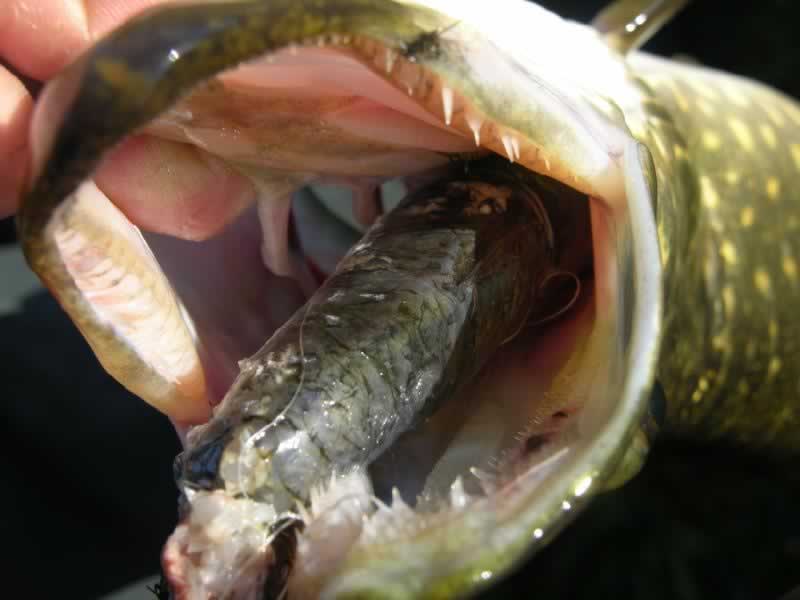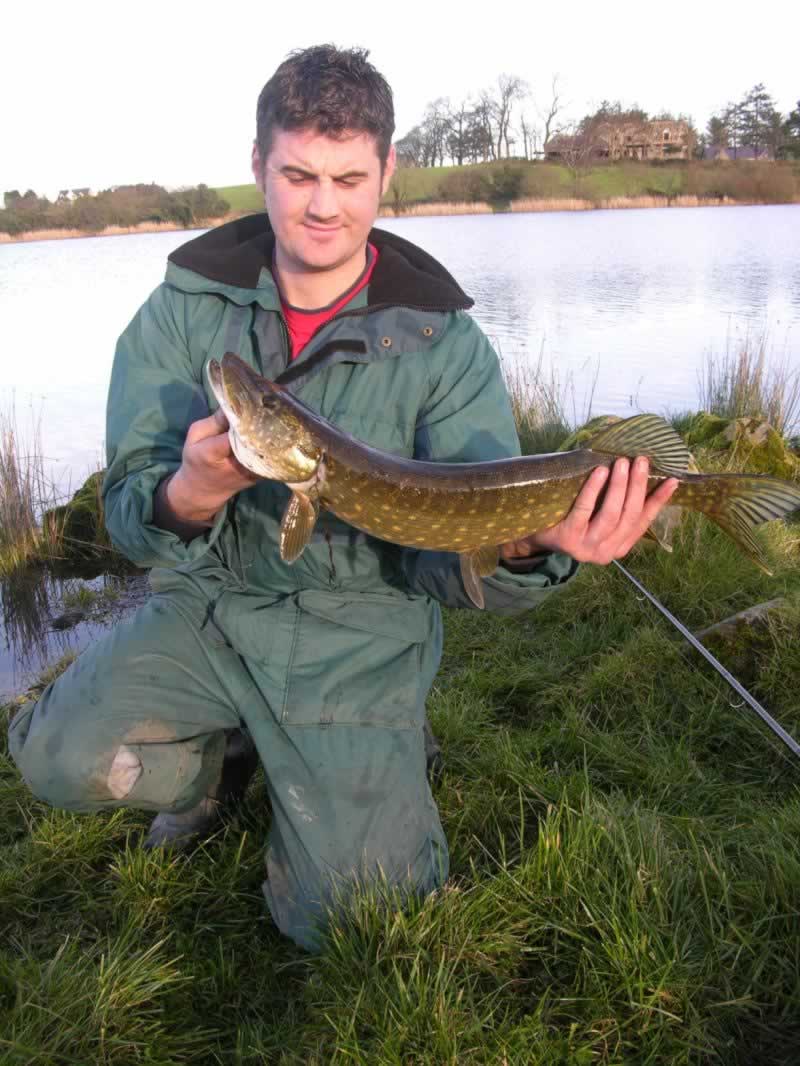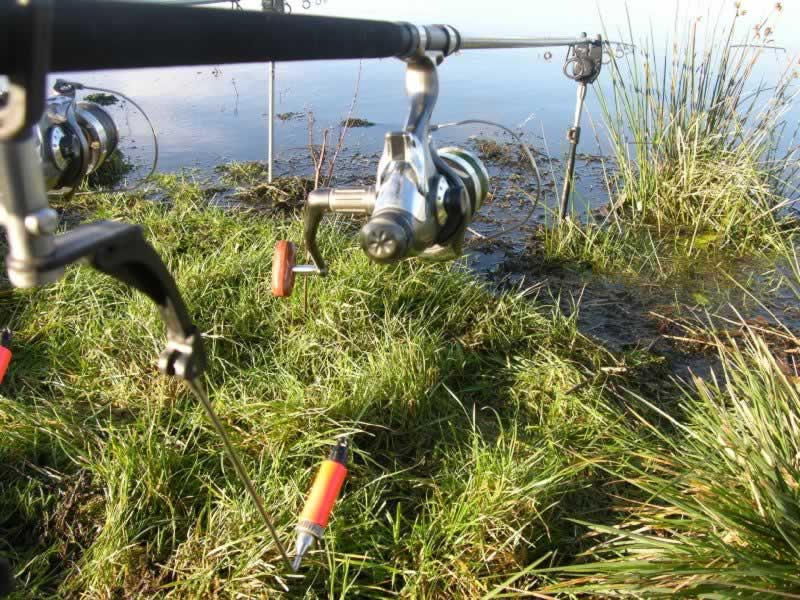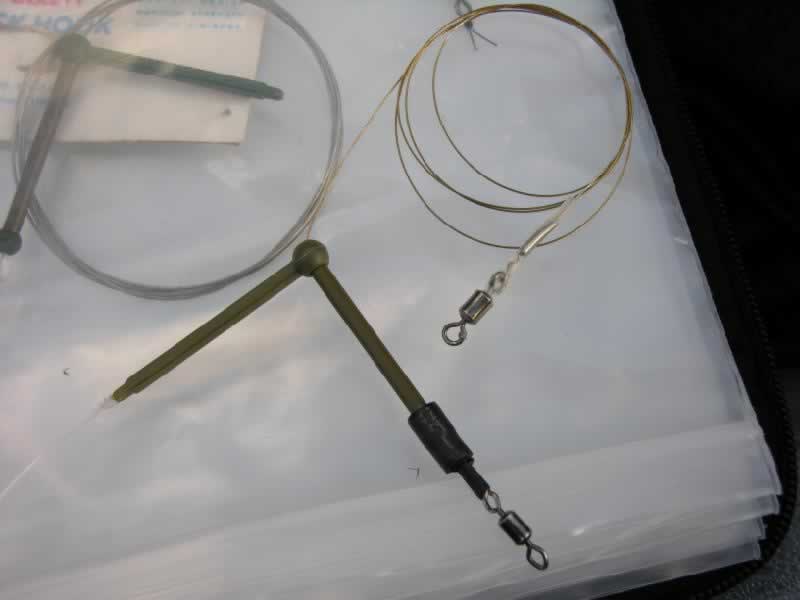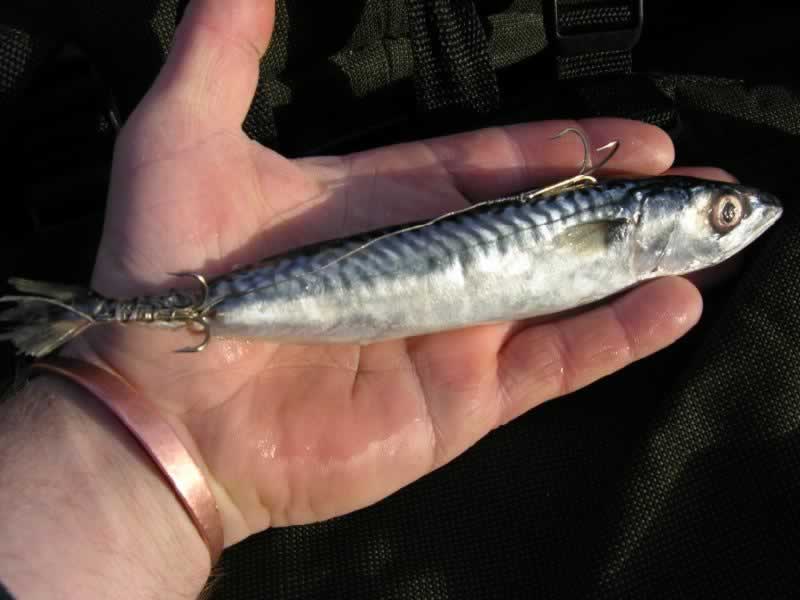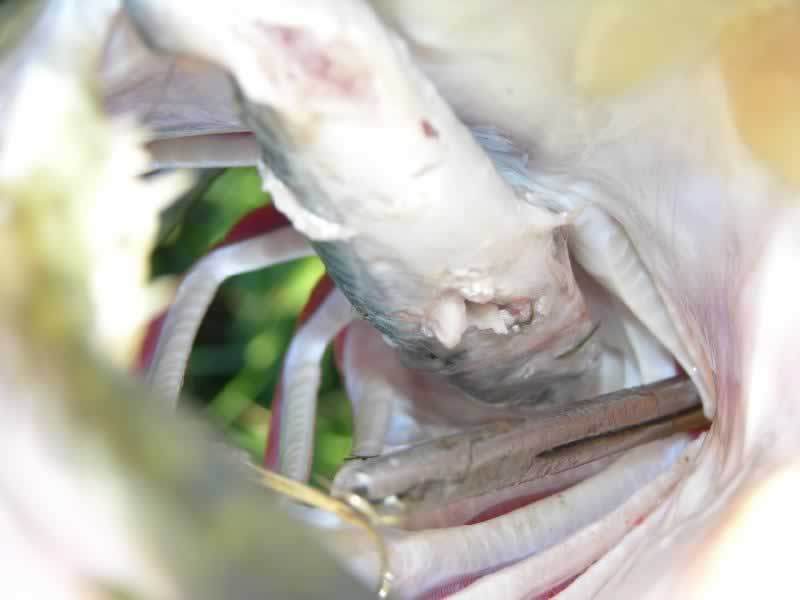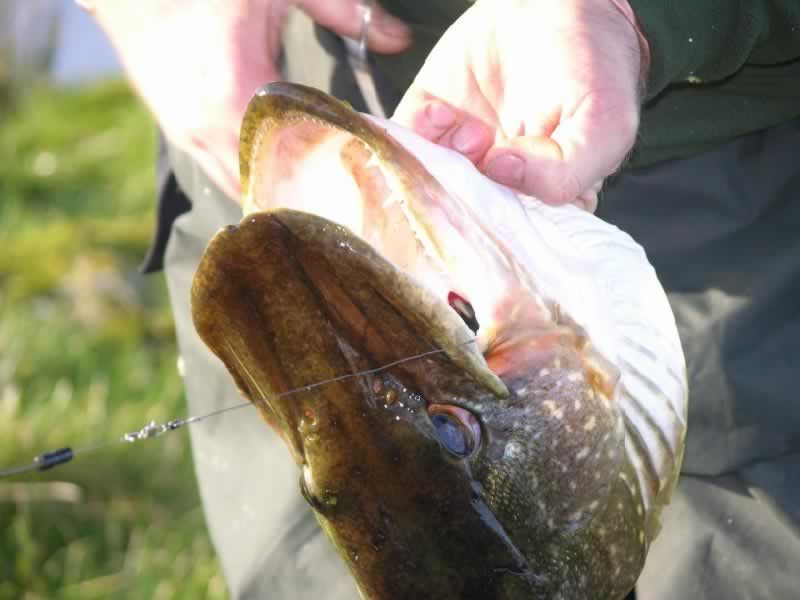Specimen Hunting Series Part 2 Pike
The Pike Challenge
Profile
Latin name Esox lucius
Irish records
Lake record: 42lbs 12oz taken in White lake in 2005 by Larry Kelly.
River record: 42lbs taken on the River Barrow in 1964 by M.Watkins.
Specimen weight
Lake: thirty pounds
River: twenty pounds
Article 2 of a twelve part series, originally written for Irish Angler magazine several years ago
The trip
After last month’s Skate adventure, I wanted to seek a freshwater species this time, and February is an excellent month to target Pike. The large females should be feeding well, before moving to shallow bays to spawn, and this is usually pre-empted by numbers of smaller males that can entertain an angler while waiting for that “lunker” to come along. With this in mind, I was delighted at a chance offer from Mark Patterson, an angling aquaintance that I met on a guiding course last year.
He had been asked to survey some game angling beats on the Lower Bann during close season to determine the prospect of winter piking, and was kind enough to ask me to join him. Stories of Salmon anglers taking large Pike whilst spinning were common knowledge, and I could hardly wait to give it a try. However, most anglers know only too well that not all adventures go according to plan, and unfortunately this was one of those trips! We arrived at the riverside by first light to see the Lower Bann in full flood. The optimum water level on this stretch is about fourteen feet and a quick check showed the height to be twenty- one feet deep, and coloured. With no choice but to give it a go, we set up at the base of the lock gates, and fished into an area of slack water out of the main current.
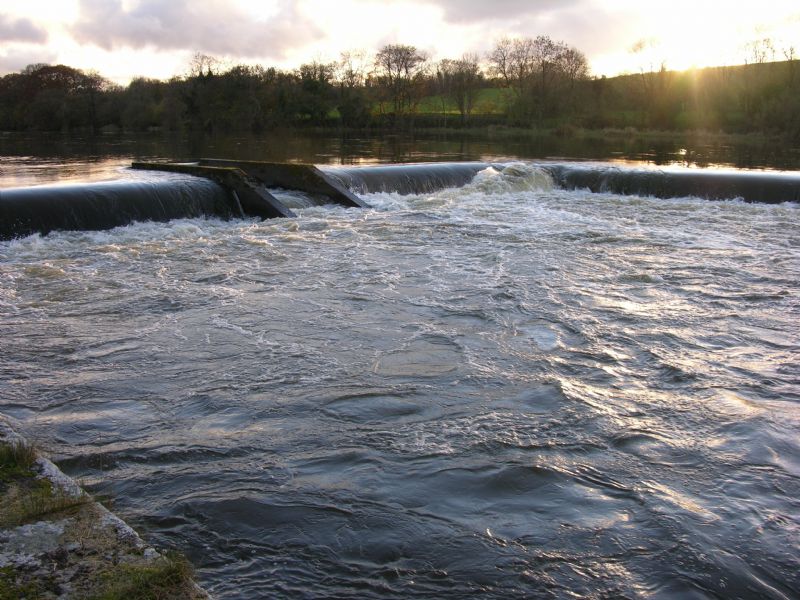
Carnroe Weir in heavy flood conditions
This seemed like an excellent ambush area where Pike might take advantage of smaller fish looking for respite from the strong current. Using float-legered paternoster rigs, our dead baits remained un-touched, and after several bite-less hours, Mark noticed that the river had actually deepened another six inches! Previous experience on the Lower Bann told me that we were wasting our time. When the water level rises, or for that matter, drops so quickly, the fish almost always refuse to feed.
Mark tried spinning a few lures and plugs upstream in the quiet canal and managed to pluck out three jacks on a copper and silver spoon, but I persisted with the dead baits in the hope of fooling something larger, but to no avail. Although I packed up later that day having blanked, it is quite possible, under the correct conditions, that these stretches have a great deal to offer the serious piker during winter months.

Mark Patterson with a small fish
With the Bann on hold temporarily, I needed a new venue to try out, and Big Phil came to the rescue. Two of his colleagues at work, Johnny and Gary, had told him about a local water that had recently produced a few Pike and they had offered to take us along. After being sworn to secrecy, we met the following weekend at 6am, and headed for the venue. The secrecy part was un-necessary as it transpired. Gary had never tried to find the lake in the dark and ended up driving around so many back roads that both Phil and I hadn’t a clue where we were. Maybe this was just a typical piker’s ploy!
The four hundred yard walk to the water’s edge that Gary had assured me, turned out to be about two thousand yards, and sorted the men out from the boys! Johnny and Gary were there in no time while Phil and I stood gasping for air, wishing we were ten years younger. The two stragglers eventually made it, and first impressions of the lake were encouraging. It looked about sixteen to twenty acres, reasonably shallow and surrounded by reeds and “pikey” looking features. Big Phil mentioned that he hoped the walk was worth it and I replied that a couple of fish each, and maybe a “double” or two thrown in for good measure would be a great result. Plumbing the depth proved that my first impressions were correct. No more than four feet deep as far as I could cast, and plenty of weed that had obviously died off through the colder months. I doubt that this area of the lake could be fished at all during the height of summer. The lads opted for running ledger tactics and to be different, I set up float ledger rigs, just so that I had something to watch as I lazed on my carp chair during the day.
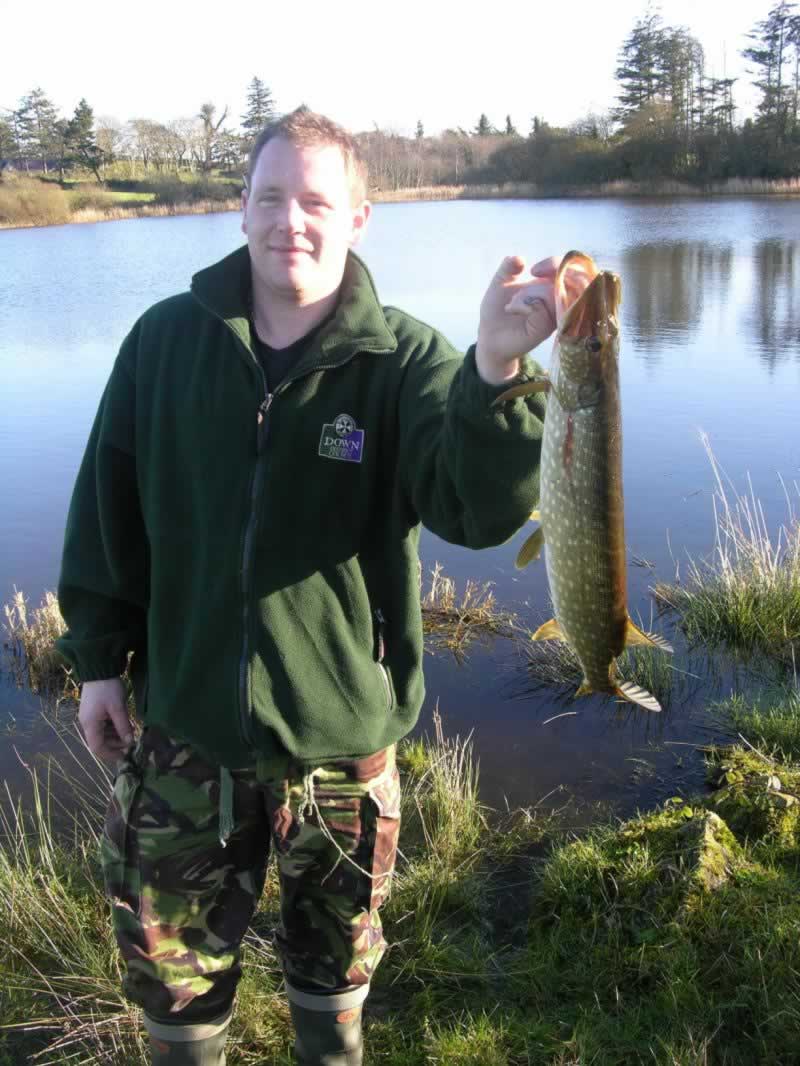
Johnny used his favourite bait of lamprey section and soon tempted a three- pound jack, followed by another of around four pounds. Any young Pike anglers reading this that haven’t experienced lamprey, it’s basically a slimy, snotty and bloody, eel-like creature that looks and smells awful, but can be a superb Pike magnet at times. Johnny set the standard for the day ahead, and it was not too long before Gary, Phil and I were all playing fish. In fact, as the morning progressed, it became completely ridiculous. On five separate occasions, two anglers were playing pike at the same time, and by midday we had clocked up forty seven fish between us and hardly had time to cook the customary Ulster fry!
I tried a few casts with the fly rod and landed two fish and missed two, but the dead bait rods were simply too busy to experiment with any other methods. All Pike landed ranged between three and six pounds, and in an attempt to avoid the smaller fish, I spent the remainder of the afternoon fishing at distance, and over different areas. This worked to some degree when I struck into something a little meatier that, once landed, pushed the scales round to fourteen pounds.
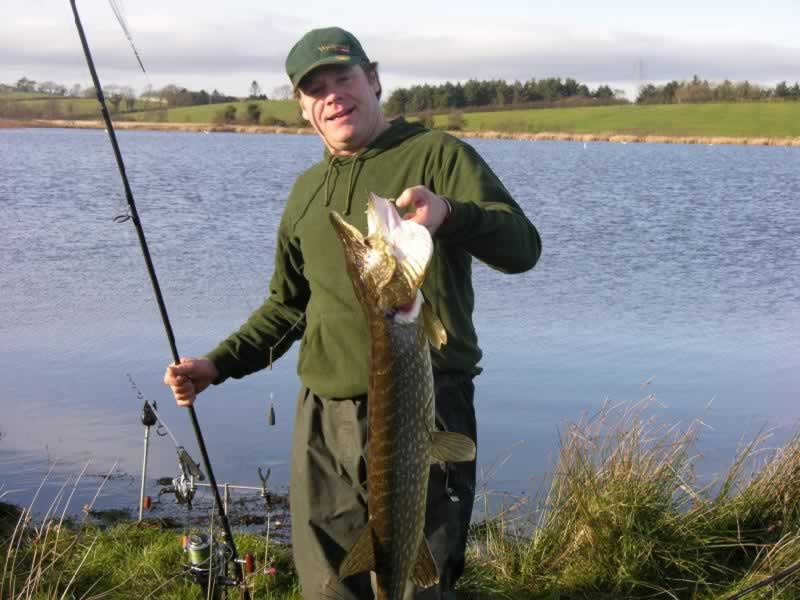
A bit better at fourteen pounds, taken at distance
I have witnessed many great days during my occasional Pike adventures, but it has been a long time since I have had such a busy and thoroughly enjoyable day. I know I did not manage to land a specimen on this occasion; in fact I didn’t even come near to it, but if it were that easy I don’t think I would do it. A challenge is exactly that, it’s a challenge, and with persistence and a bit of homework it is such a fabulous feeling when you eventually hook and land that fish of a lifetime.
I would like to thank Gary and Johnny for allowing me to share one of their angling hotspots. I have the utmost respect for these lads in their angling approach. They don’t follow other anglers to old venues or hang around waiting for snippets of news, but scan an ordnance survey map, pick a decent looking water and go and fish it. We ended the day with over seventy pike between us, and were still catching as the light faded. Personally, I used twelve Joey Mackerel, ten Pollen, four small Trout and fifteen Sardines and had to pack up when I ran out of bait! The walk back to the jeep nearly killed me but it was definitely well worth it, thanks lads.
Tackle and equipment
Pike tackle consists of the main gear plus a great deal of accessories. This is a list of most of the necessities. For dead baiting, a twelve- foot rod with a test curve of two and a half to three pounds is ideal, and if possible, buy a matching pair. Personally I would go for the three- pound test curve, as this will have the power to cover all eventualities such as flooded rivers or casting large baits at distance. Team this with a quality bait-runner reel or similar. I have given up using nylon as a main line and use braid of fifty pounds breaking strain instead. This has seriously cut down on tackle losses. Quality bite alarms will give an instant signal should a pike lift the dead bait and are necessary to help avoid deep hooking a fish. Attach these to bank sticks, the type that have a screw point are best as they can cut into tough or stony ground. Drop off indicators will give a visual signal and also instantly show and relate a drop back bite should a pike run towards the rod. You will need a large, specimen landing net, but buy the type with an alloy joint block; the plastic version will let you down. A large un-hooking mat is important to prevent damage to fish and a pike tube or sack can be useful to keep a specimen fish in while it recovers, or while you prepare the camera for that photo of a lifetime. Un-hooking a fish will require the use of long nosed forceps and a pair of cutters can be used to snip any deep hooks rather than poking around causing damage, but this would be in the worst case scenario. I haven’t needed to leave hooks in a fish ever. Do not forget weighing scales and weighing sling plus a camera if you wish to record the capture. These are most of the main tackle requirements, but bare in mind personal comforts. Most piking is carried out through the winter months so warm clothing, waterproofs, a brolly, food and drinks and a comfy chair are vital.
End tackle (dead-baiting)
Pike have extremely sharp teeth! Whatever style of pike fishing chosen, a wire trace is a must. A good selection of pre-made traces should be stored in a rig bin for safety. Use treble hooks from size six to size two to cover most situations, and tie them at different lengths to suit the size of bait being used. The lower treble should fall short of the head of the dead bait when rigged tail first, to avoid deep hooking. Carry a range of lead weights from one ounce up to three ounces and a selection of drilled bullets, along with a range of floats, standard versions, sunken floats and drifters. They will all have their uses under the right conditions. Quality swivels, link swivels, spare line, beads, spare wire, elastic thread, spare trebles and dozens of other bits and bobs soon fill up a pikers tackle box.
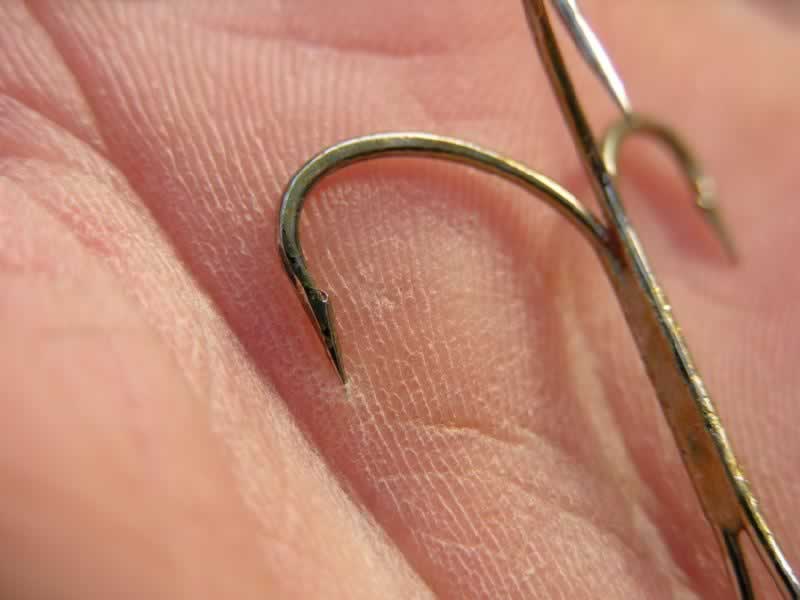
Methods/tips
Two rods allow for greater experimentation. Cast out different distances to find pike holding hotspots, alternate baits to determine which dead-bait is preferred on the day, try different tactics such as ledgering, float- fishing, popping the bait up etc. baits can be popped up using environmentally friendly foam pieces, balsa inserts or simply by injecting air into the dead-bait with a large hypodermic needle. Plumb the depths thoroughly on a new venue to determine gullies, ledges and drop offs where pike will hide or patrol and fish to these features. When float fishing, use a stand off boom and a wire “up-trace”. This wire feeds through the boom and runs between the wire trace and the float to prevent an accidental bite off during the initial run or whilst playing a fish.
Bait
There are such a variety of dead baits available to the pike angler; the list is almost endless. Popular choices are Roach, Perch, Trout and Eel sections, Smelt and Lamprey. The ranges of oily sea fish are superb such as Herring, Mackerel and Sardines but I have also caught well on Whiting and Pouting, Sand eel and even Squid.
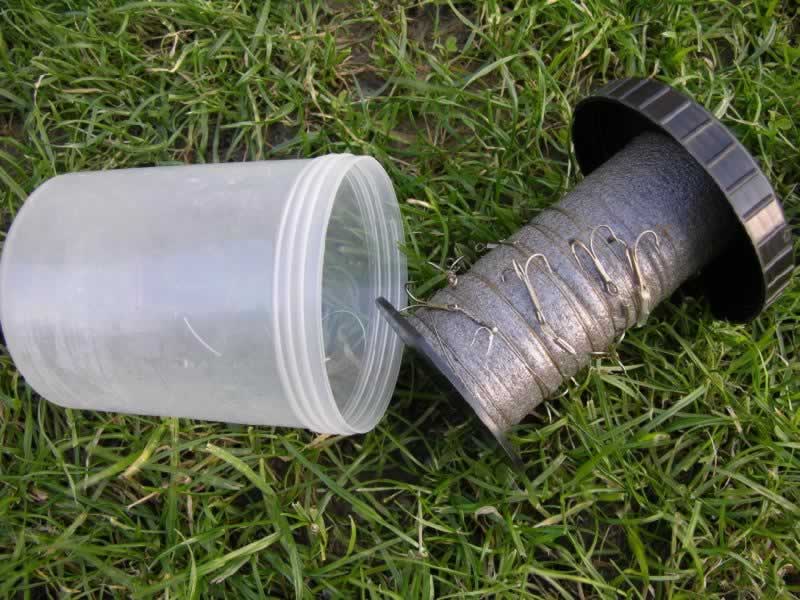
Interesting facts (information sourced from www.esoxecosse.com)
Pike have been on this planet in one form or another for over eighty million years, so, as a species they must be doing something right! In the United Kingdom and Ireland, the earliest pike fossils were found in Norfolk and are approximately half a million years old. These fossils were identified as Esox lucius, the same species we fish for today. However, as yet, there is no hard proof that Pike were present in Ireland during these early years. Evidence points towards the fact that monks introduced the species around the fourteenth century. I personally believe they were here a long time before that.
This species can be found throughout the northern hemisphere. From North America, Canada and Alaska, to Finland, Sweden, Norway and Russia, reaching as far south as northern Spain and Italy. As all anglers know, our largest, freshwater predator is present throughout Ireland. Esox Lucius is a pure predator. Its whole body is designed to target and catch live prey, or scavenge when neccessary. The jaws are large and armed with a huge array of teeth. Most of these teeth point backwards to aid catching and gripping its prey, even the gill-rakers have backward pointing spikes to prevent smaller fish escaping through the gill covers.
In conjunction with the lateral line along the body, a pike’s head is equipped with a mass of sensors in the form of small pores. These are able to pick up small vibrations and changes in pressure when homing in on a victim. They have terrific eyesight and an amazing sense of smell and will travel a considerable distance to find the source of a scent trail. If all this built in equipment is not enough, Pike also have the fastest turn of speed out of all our freshwater species. This sprint cannot be maintained of course, but it does provide a heart-stopping take when lure or fly-fishing. This acceleration is due to the dorsal and anal fins grouped unusually close to the large tail fin, to form a huge and powerful paddle.
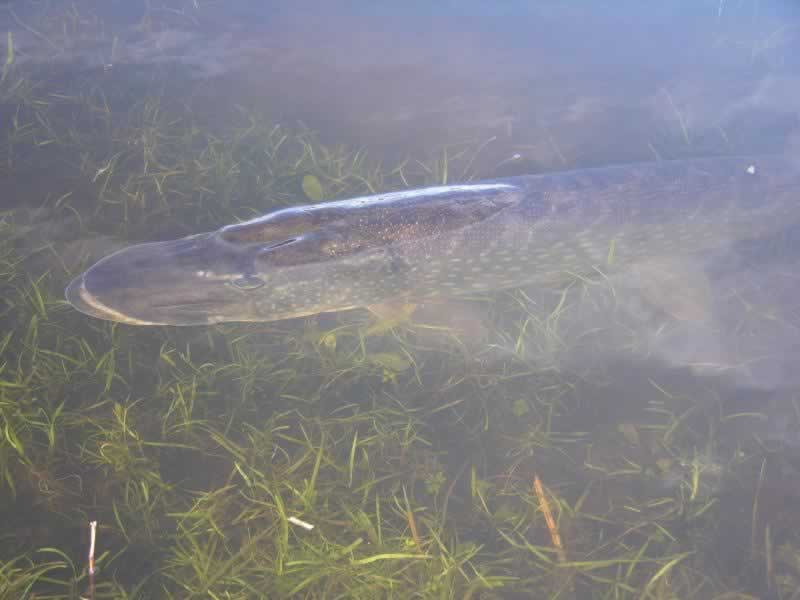
Life cycle
Pike spawn in early spring. It is no coincidence that they spawn before most other freshwater species, and take advantage of the easy meal ticket when Roach and Bream etc are otherwise pre-occupied. With a minimum water temperature of six degrees, female Pike will move into shallow, weedy bays prior to spawning. Accompanied by up to four males, a large female may lay up to three hundred thousand eggs. (On average, only 0.1 percent of these eggs will survive to become mature adults). Depending on water temperature, the eggs will hatch between five and twenty six days. At only one centimetre long, the hatchlings will spend the next twelve days feeding off the yolk sac until their jaws are fully formed and able to feed on plankton. Within three weeks these tiny, Pike replicas will target caddis and dragonfly larvae, or even each other if food is scarce. By the second year, the pikes’ diet will be almost exclusively fish. It is reported that Pike will live to a maximum age of twenty -five years, which may be optimistic, but only grow for ten to fifteen years of the life span. Size or growth rate will depend upon the food quality and availability, but generally speaking, very few fish will reach the magic forty-pound barrier.




